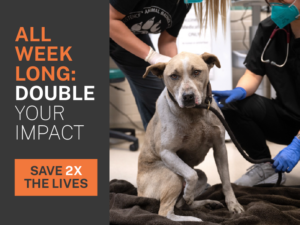GOAL
Our focus is to walk our dogs safely and comfortably on the street. It is more fun to stroll in the park with a dog that does not pull on leash than with a dog with no leash manners. We hope to teach our dogs that there should always be slack on the leash. We control how much freedom (leash length) the dog has, but no matter the leash length, the dog is taught not to pull on the leash.
EQUIPMENT
- Strong dogs that pull on leash might need to be fitted with a no-pull harness.
- Other dogs (dogs that are difficult to control with a no-pull harness) might need a head halter, like a Gentle Leader.
- Leashes should be 4-6 feet long.
- Do not use a retractable leash! Retractable leashes are strongly discouraged as they teach a dog to pull harder to gain more distance on the leash.
INSTRUCTIONS FOR MANAGING DOGS ON LEASH
- Have treats and the necessary training equipment with you when preparing to go on a walk.
- Have the dog sit or stand calmly before putting on their walking equipment.
- Walk dogs on your left side.
- Always have both hands on the leash except when feeding the dog a treat.
- Keep the handle of the leash in your right hand, thumb through the loop. Fasten the rest of the handle in your right fist or slide your right hand through the loop holding the leash. The right hand is your “anchor.”
- The left hand is the hand closest to the dog. Use your left hand to control the length of the leash. You also dispense treats to the dog with your left hand.
- Once outside the home, give the dog a chance to eliminate. “Stand like a tree.” Don’t engage with the dog and give them enough leash to sniff.
- Praise the dog and reward them every now and then if they are walking on a loose leash by your side. A loose leash means there is slack in the lead, and the leash forms a letter “U” or “J.”
- Always reward the dog on your left side, facing the same direction you are. In time, the dog will start gravitating toward where the treats are dispensed.
GIVE AND GO METHOD
- The instant the dog starts forging ahead, release the leash from the left hand (always keep the handle of the leash in your right hand), turn abruptly and go in the opposite direction.
- Ask the dog to follow you with a “Let’s go” as you turn. “Let’s go” means “catch up with me” or “keep up with me.”
- When the dog is back on your left side, facing the same direction as you are, take the leash back with your left hand while simultaneously praising and rewarding the dog for keeping up with you. When the dog is back on your left side facing the same direction as you are, take the leash back with your left hand, while simultaneously praising and rewarding the dog for keeping up with you.
- Once you are walking forward, be prepared for another “give and go” as soon as the dog starts to move ahead of you.
- Some dogs tend to cross in front. If the dog begins to cut you off, turn into the dog (to your left) and walk in the opposite direction. As you turn, cue the dog with a “Let’s go.”
HELPFUL HINTS
- Before the walk, some dogs might need a short play session to burn off some energy.
- A few attention exercises, like “look,” will encourage the dog to focus on the handler. Bring a treat from the dog’s nose up to your eyes, saying, “Look.” If they make eye contact following your hand, mark the behavior with a click or a “yes” and reward the dog with the treat.
- Teach the dog, “Let’s go.” With the dog on your left side, bring a treat to the dog’s nose with your left hand. When the dog follows the treat, pivot to your right slowly, saying, “Let’s go.” If the dog follows, mark the behavior with a click or a cheerful “yes” and reward the dog with the treat out of your left hand.
- Always reward good behavior. Movement and a high rate of reinforcement (for good behavior) make loose-leash walking more exciting for the dog.
We are always here to help! You can find additional behavior and training resources at pasadenahumane.org/behavior.



